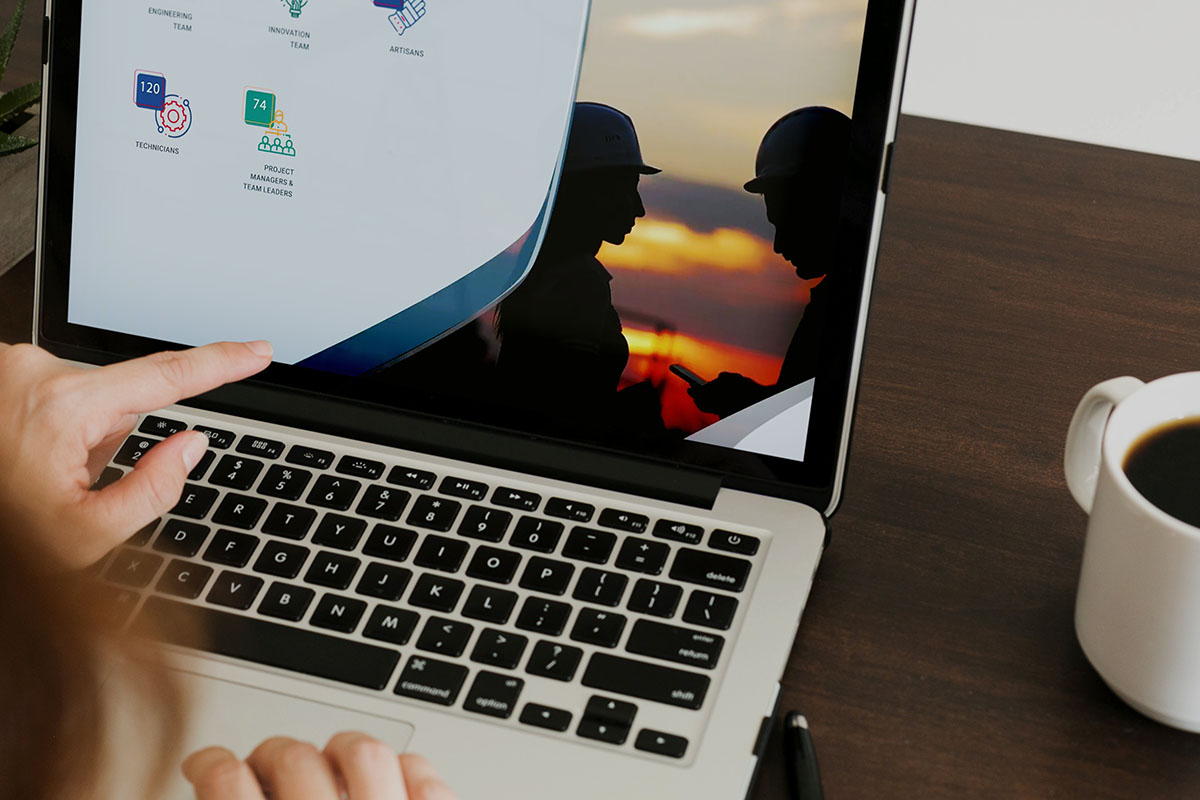
South Africa Animation Studio: Are Motion Graphics and Animation the Same?
Animation shows up all over the place—on your phone screen, in adverts, online tutorials, even at corporate events. It is easy to assume everything that moves is just animation. But once you step into a studio, or start planning a video project, you quickly realise that not all animation is the same. One of the biggest areas of confusion? The difference between motion graphics and animation. Are they the same thing? Not quite. This article aims to explain what separates the two, what they share, when to use each, and how a South Africa animation studio can help with either—without throwing in unnecessary industry talk. Let’s get started.
What Are Motion Graphics?
Motion graphics are animated visuals built around shapes, text, icons, and basic design elements. They are often used to explain something clearly and quickly—like a product feature, a business update, or a statistic.
They do not involve characters, storytelling, or deep emotional layers. Instead, they focus on movement, timing, and clean design to hold attention. Think animated bar charts, a sliding pie chart in a company report, or an animated logo in a brand video. A South Africa animation studio might use motion graphics for anything from explainer videos and corporate presentations to social media content and product launches.
What Is Animation?
Animation refers to the wider category that includes all types of animated visuals—2D cartoons, 3D characters, hand-drawn frames, stop-motion, and yes, motion graphics. It often involves storytelling, characters, scenes, dialogue, and emotion. It is more expressive and can take more time and effort to make, especially if you are developing character personalities or building whole environments. If you are working with a South Africa animation studio, this approach might be more suitable for short films, educational series, training content, or any visuals that need to carry more weight or depth.
Understanding the Disconnect
Because motion graphics are a type of animation, it is easy to lump them together. But once you understand what they are used for, the difference becomes more noticeable. Motion graphics are straight to the point. Animation is usually more layered and emotional. One is about delivering information clearly, the other about presenting a fuller experience. A South Africa animation studio can guide you through these choices based on the intent and content of your project.
Motion Graphics vs Animation: When to Use Each Technique
1. When to Use Motion Graphics
Use motion graphics when your goal is to communicate clear, structured information, without the need for character-driven stories or emotional narrative arcs. They are well suited for:
- Explainer videos: Short videos breaking down a product, service, or idea using visuals, icons, and animated text.
- Data presentation: Turning statistics, charts, and figures into animated visuals that are easier to understand.
- Branding visuals: Animating logos, taglines, or visual elements for websites, ads, or corporate material.
- Social media content: Quick, visually striking clips that get the message across within seconds—ideal for platforms where user attention is short.
- Corporate communications: Internal presentations, performance reports, or event visuals can use motion graphics to make dry content more visually accessible.
A South Africa animation studio might suggest motion graphics when the timeline or budget is tight, or when the messaging is meant to be functional rather than expressive.
2. When to Use Other Animation Techniques
Choose animation when your content needs to go beyond symbols and shapes, to express personality, create atmosphere, or tell a story. Consider it when:
- Narrative is essential: If the video has characters, a plot, or emotional shifts that guide the viewer through a journey.
- Education needs depth: Explaining a process or idea that benefits from metaphor, scene-building, or visual storytelling.
- You want to build brand identity through character: Character animation allows brands to create recognisable mascots or personalities that build familiarity over time.
- Entertainment-focused projects: TV shows, short films, or game cinematics rely on full animation to hold attention and create immersion.
- Training simulations: Realistic environments, scenario-based learning, or procedural training benefit from animation that mirrors real-life behaviour.
A South Africa animation studio can help with all of the above by developing scenes, characters, and movement styles that match your objectives—whether they are educational, creative, or commercial.
What Are the Similarities Between Motion Graphics and Animation?
Despite their differences, motion graphics and other types of animation do share several things in common.
1. Visual Medium
Both use visual design to communicate. Whether it is animated icons or a full character scene, the end goal is visual clarity.
2. Creation Process
They follow similar workflows—from concept development through to editing and final delivery.
3. Keyframe Animation
Movement in both forms is usually controlled by keyframes—setting start and end points for objects to animate.
4. Engagement
Both styles help make information or stories more interesting than plain text or still images.
5. Artistic Creativity
Design choices matter. Whether creating motion graphics or character animation, creativity and design play a central role.
What Are the Differences Between Motion Graphics and Animation?
Let us break down the core differences:
| Factor | Motion Graphics | Animation |
|---|---|---|
| Narrative Structure | Often non-linear; designed to deliver standalone messages or visualise information without a traditional story arc. | Usually follows a structured narrative with a clear beginning, middle, and end—suited to story-driven or character-based projects. |
| Use of Characters | Minimal or none. Characters are not a major focus and are typically flat or symbolic if used at all. | Frequently includes fully developed characters that act, react, and express emotion throughout the piece. |
| Level of Customisation | Often uses templates and pre-designed assets with some custom animation applied to shapes and text. | Typically requires more bespoke creation including custom character design, unique environments, and frame-by-frame animation. |
| Required Skill Set | Strong graphic design skills combined with animation basics. | Requires broader skills in drawing, rigging, modelling, animation principles, and sometimes 3D software knowledge, plus story development. |
| Audience | Typically business-focused or informational. Ideal for internal communications, ads, presentations, or social media content. | Often entertainment-based or educational. Used in films, series, explainer videos, and games where longer attention and emotional buy-in are common. |
| Cost | Generally lower due to simpler assets, less intensive animation, and shorter duration. | Tends to cost more because of character animation, detailed environments, and longer production timelines. |
| Duration | Shorter pieces, usually under a few minutes. Designed for quick consumption and straight-to-the-point messaging. | Can vary widely—from a few seconds to full-length features—depending on the story and depth of the project. |
A South Africa animation studio can help you weigh these factors and choose the right direction based on your audience and message.
The Design Process
How Is Animation Made?
Here is how a typical animation project comes together:
- Concept Development: The initial idea or story is planned and discussed.
- Script Writing and Storyboarding: Each scene is sketched out to map the visuals alongside the development of the script.
- Character Design: Creating character sketches and, for 3D animation, modelling the character.
- Environment / Scene Building: Backgrounds and locations are created to fit the narrative.
- Animation: Movements are added based on the storyboard and keyframes.
- Colouring and Texturing: Design elements are coloured and styled to fit the theme.
- Sound Design: Voiceovers, sound effects, and music are licenced and edited.
- Editing and Finalisation: Clips are arranged and synced with audio.
- Review and Revision: Feedback is collected, and changes are made.
- Rendering and Delivery: The final animation is rendered into a shareable format.
A South Africa animation studio handles each of these steps, keeping everything aligned from start to finish.
How Are Motion Graphics Made?
Motion graphics projects follow a slightly different path:
- Identify Purpose: Understand what the video is supposed to do.
- Planning and Concept Development: Build the idea into a working concept with goals and tone.
- Script Writing and Storyboarding: Write a clear script and sketch out visuals.
- Design and Visual Elements: Create all icons, shapes, and text in the desired style.
- Animation: Add motion to these graphics using timing and transitions.
- Timing and Movement: Refine movement to match audio and create rhythm.
- Audio and Final Mix: Add music, sound effects, and voice if needed.
- Review and Revision: Adjust based on feedback.
- Finalisation and Delivery: Render and deliver in the format needed.
These projects are often quicker. A South Africa animation studio can usually turn them around faster than character animations, depending on the complexity.
Final Thoughts
Motion graphics and animation are not the same, but they are closely related. One is about movement with purpose, the other about depth and narrative. The choice between them depends on what you need the visuals to do. A South Africa animation studio can help you make that choice, manage the process, and deliver a finished video that fits your goals—whether that is an animated explainer, a short business update, or a longer training video. Knowing the difference is the first step. Getting it made is where we come in.
You have the what, and we have the how. At Sound Idea Digital, we handle all the tricky parts of motion graphics and animation so you do not have to. Just get in touch and we will take it from there. Simple as that.
We are a full-service Web Development and Content Production Agency in Gauteng specialising in Video Production, Animation, eLearning Content Development, Learning Management Systems, and Content Production.
Contact us for a quote. | enquiries@soundidea.co.za | https://www.soundideavideoproduction.co.za| +27 82 491 5824 |
Looking for More?
If you are still wondering about which style suits your project, who to trust with your animation, or whether to roll up your sleeves and do it yourself, we have a few more reads that dig a little deeper. Here are some extra articles that might help clear things up:
Animation Companies in South Africa: Choosing the Right One

